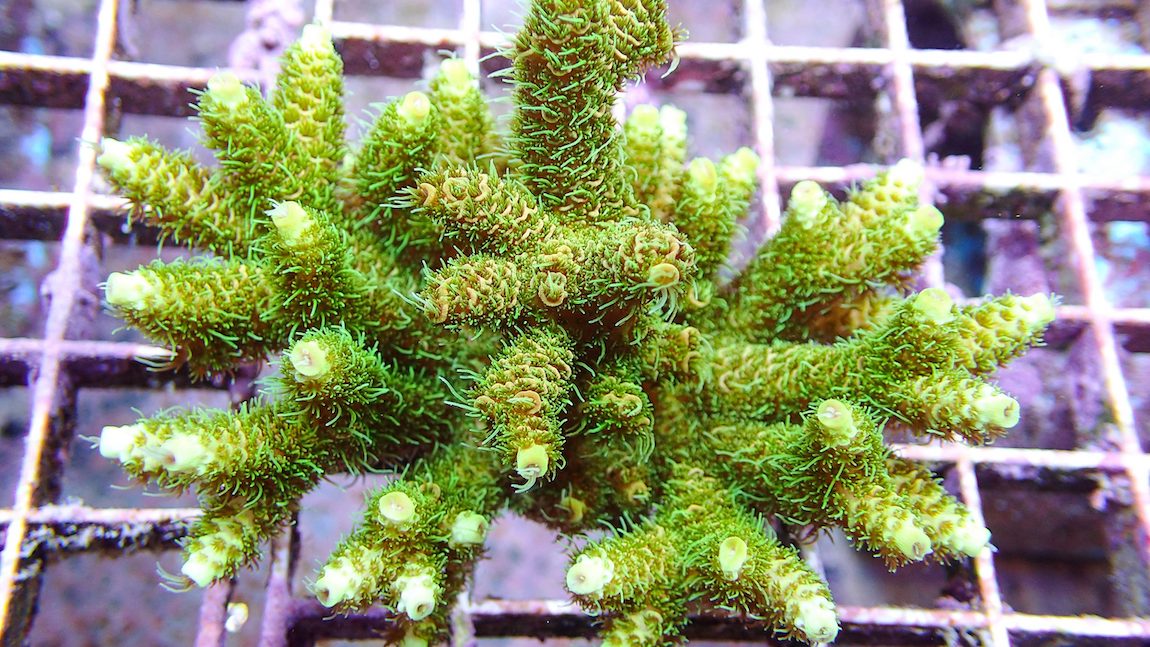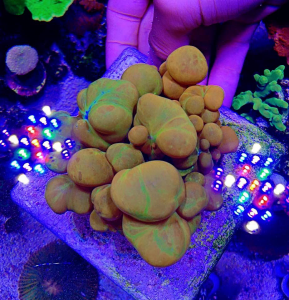
Grow Your Own Coral
Keeping a saltwater aquarium is a beautiful and popular hobby. It’s also an expensive one. There’s the cost of the tank, the fish, the equipment, and of course, the coral. Aquarium coral can cost anywhere from $40 for beginner corals, up to $300 for exotic types. In California, a single Bounce Mushroom coral polyp sold for $6000 in 2018!
Luckily, there are some ways to save a bit of cash. One is to propagate, or grow, your own coral.
With hard corals, it’s as simple as cutting off a branch and attaching it to a new surface with glue or fishing line. The branch will then begin to grow into a brand new hard coral. In zoas, which are soft coral, you cut between the polyps and attach the new mat onto the surface. For mushrooms corals, you must divide equally across the center of the mouth, then place into a drilled plastic container with some rocks, where it will adhere itself.
Perhaps the most important thing to remember when propagating corals is to be safe. Some corals, such as zoanthids and palythoas, emit a substance called palytoxin that can cause serious reactions if it comes in contact with skin or eyes. You must wear gloves and protective eye wear to properly shield yourself from any of the toxin.
Other corals can give out a nasty sting with their tentacles, so the same precautions are recommended. You will also needs tools appropriate to the type of coral that you are propagating, depending on the type anything from a razor to a band-saw may be required. Ample research into the particular type of coral you are dealing with is highly advised.
Of course, hobbyists aren’t the only people interested in propagating coral. Many scientists are working to increase coral growth in the world’s oceans. Microfragmenting is a technique that uses tiny coral “seeds,” which grow 25 or even 50 percent faster than usual. This may make it possible to mass-produce reef-building corals for transplanting onto dead or dying reefs, perhaps slowing or even reversing the alarming loss of corals throughout the world.
Sources:
- https://www.liveaquaria.com/article/196/?aid=196
- https://www.washingtonpost.com/news/speaking-of-science/wp/2017/07/28/homegrown-coral-reefs-are-beautiful-and-potentially-dangerous/?utm_term=.dba8444e96de
- https://www.nytimes.com/2014/11/25/science/a-lifesaving-transplant-for-coral-reefs.html
- https://reefbuilders.com/2015/10/13/bounce-mushroom-sells-record-6000-single-polyp/
- https://reefbuilders.com/2016/03/17/the-biggest-bounce-shroom-in-the-world/
Curriculum Reference LInks
- Biological World / Systems and Interactions / 5: Students should be able to conduct a habitat study; research and investigate the adaptation, competition and interdependence of organisms within specific habitats and communities
- Biological World / Sustainability / 10: Students should be able to evaluate how humans can successfully conserve ecological biodiversity and contribute to global food production; appreciate the benefits that people obtain from ecosystems


